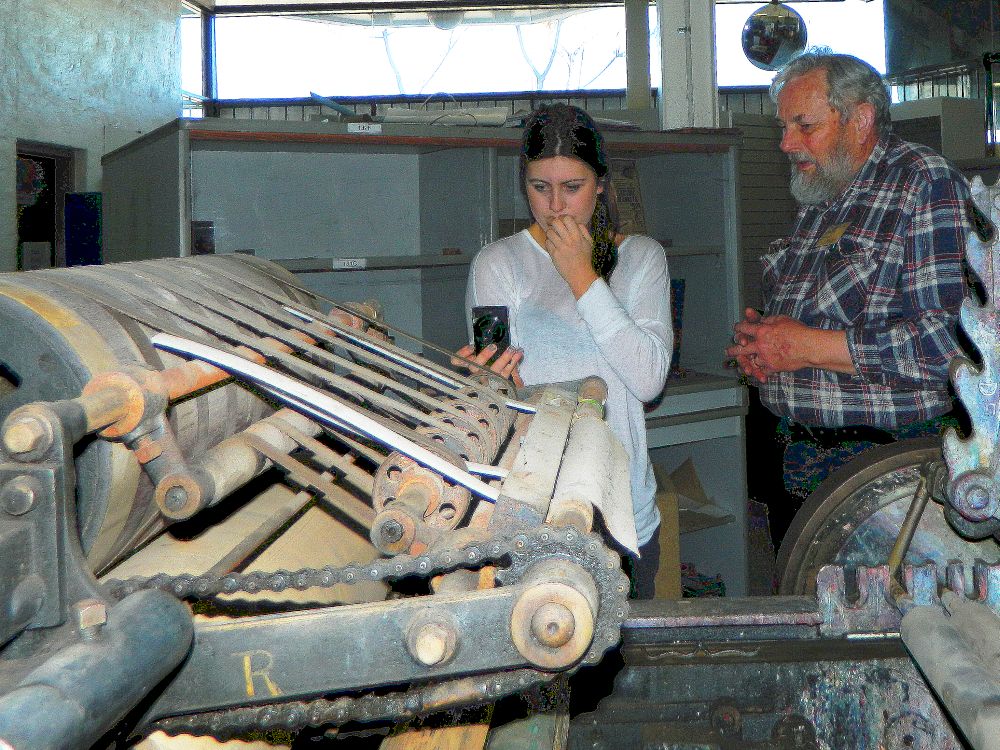
Awe-struck visitor admiring the old Stop-Cylinder press
The machine in this picture is a "stop-cylinder" style, developed around 1870 but this unit may be much later, possibly 1920 or so. The impression cylinder stops rotating at the end of the impression stroke, and the forme returns underneath it. The cylinder, therefore, only rotates one way.
Cylinder presses, developed over the 19th C, exist in many different arrangements, and were the main style of press for book and newspaper work (until rotary letterpress became common for major newspapers). Rotaries do not print from type directly, but from curved plates made by moulding the flat pages of type using the stereotype process, and casting semi-cylindrical plates that clamp onto the rotating press.
"Platen" presses are the only others that print from flat type: they earliest presses (like J. Gutenberg's) were platens: a heavy flat plate (the platen) presses the paper and type together. Platen presses also exist in many different arrangements. In the 20th C they were popular for smaller work (and still are!)
The MMOP stop-cylinder press was obtained from the firm of Singer, Pink & Kassell in South Melbourne when they closed about 1985. They were in the sausage skin business and used the press to print on the skins with edible ink!. MMOP also holds typesettings from this firm, showing details of many sausage types that their clients used to make.
When repaired, this press will be available for short to medium print runs but to conserve it, the motion will be limited to man power (no motor).